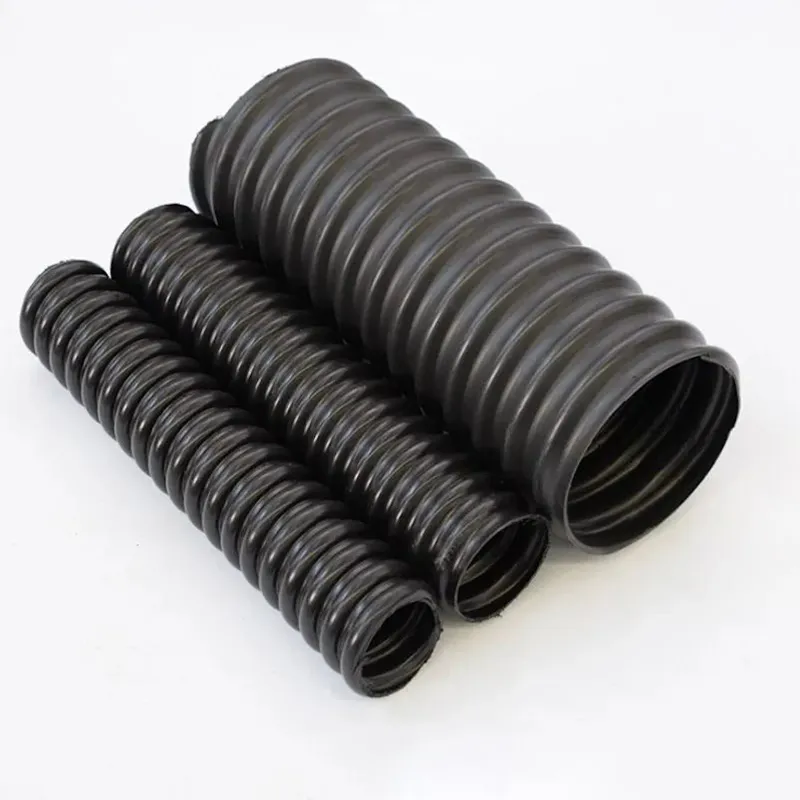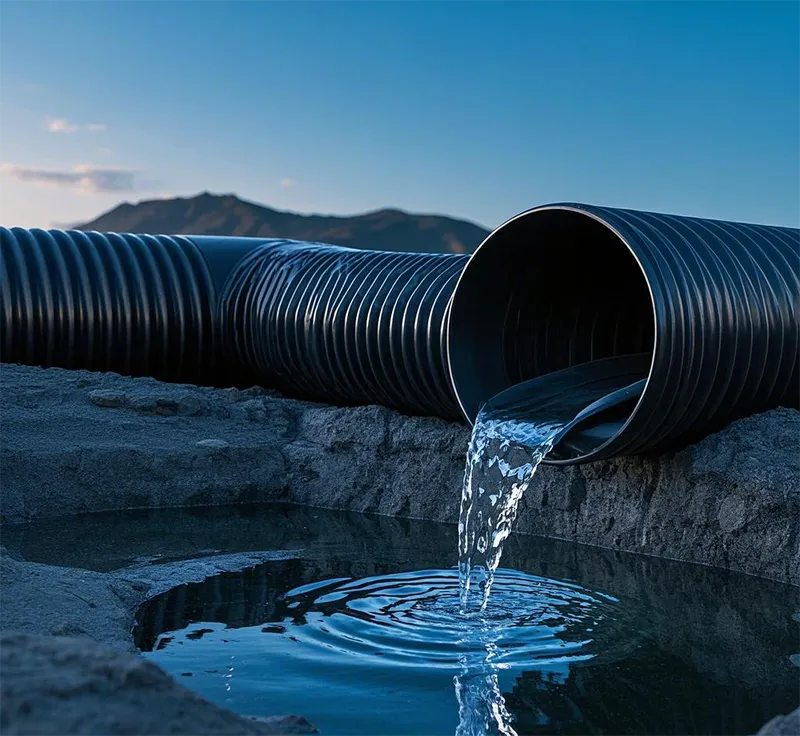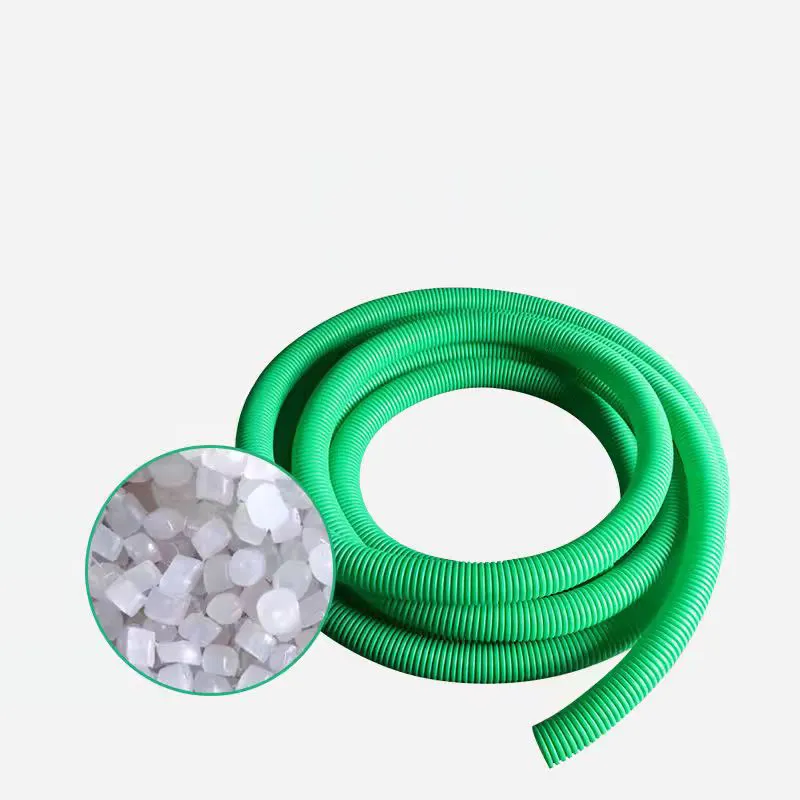Mining is a complex process that involves the extraction of valuable minerals from the earth's crust. As with any industrial process, water is an essential component in mining operations. It is used for dust suppression, ore processing, drilling, and other activities. To transport water and other fluids in mining operations, a durable and reliable material is needed. One such material is High-Density Polyethylene (HDPE) water pipe. In recent years, HDPE water pipe has become increasingly popular in the mining industry due to its superior physical properties and cost-effectiveness. In this article, we'll discuss the benefits of using HDPE water pipe in mining applications.
2" HDPE Water Pipe for Mining
The 2" HDPE water pipe is specifically designed for mining applications, offering a durable and reliable solution to meet the unique requirements of the mining industry. Here's a suggested description:
"Experience the superior performance of our 2" HDPE water pipe, meticulously engineered for mining operations. Crafted with durability and reliability in mind, this high-density polyethylene (HDPE) pipe is built to withstand the demanding conditions of the mining industry.
Our HDPE water pipe is ideal for various mining applications, including water supply, dewatering, process water transportation, and tailings management. It is designed to handle the rigorous demands of mining operations, delivering exceptional performance and longevity.
Constructed with premium quality HDPE material, our water pipe offers excellent resistance to abrasion, corrosion, chemicals, and UV radiation. It can withstand high-pressure environments, ensuring a consistent and efficient water supply throughout your mining site.
The 2" diameter of our HDPE water pipe provides optimal flow rates while maintaining structural integrity. Its smooth inner surface minimizes friction, enhancing hydraulic efficiency and reducing energy consumption. With its lightweight design, our HDPE water pipe is easy to handle and install, saving both time and labor costs.
Engineered for safety, our HDPE water pipe meets stringent quality standards and is tested to ensure leak-free performance. It is manufactured to withstand extreme temperatures, allowing it to operate seamlessly in diverse mining environments.
Invest in our 2" HDPE water pipe for mining applications and benefit from its exceptional durability, reliable performance, and cost-effectiveness. Designed to withstand the challenges of mining operations, it ensures a steady and uninterrupted water supply, contributing to the smooth functioning and productivity of your mining site."
By highlighting the durability, reliability, specific mining applications, and the unique features of the HDPE water pipe, this description effectively communicates the suitability and benefits of using it in mining operations.
Is the 2" HDPE water pipe UV resistant?
HDPE water pipes are typically manufactured with carbon black as a UV stabilizer, as exposure to ultraviolet radiation can cause the pipe to degrade over time. The carbon black acts as a barrier to UV radiation, helping to protect the pipe from damage and maintain the material's strength and durability.
However, the level of UV resistance can vary based on the specific formulation and manufacturing process of the HDPE pipe. Some pipes may have a higher level of UV resistance than others, depending on factors such as the thickness of the pipe wall and the quality of the carbon black used.
While 2" HDPE water pipes are generally UV resistant, prolonged exposure to direct sunlight can still cause them to degrade over time. To minimize the effects of UV radiation, it is recommended to bury the pipe underground or protect it with an opaque or light-colored covering. In addition, periodic inspections and maintenance can help ensure the longevity and reliability of the 2" HDPE water pipe system.
It is precisely because this 2" HDPE water pipe has an anti-ultraviolet effect. In mines, there is always a part of the water pipe that needs to be exposed to the air and accept the baptism of ultraviolet rays, but the Mining 2" HDPE water pipe has a strong ultraviolet ability .
Which is Stronger PE or HDPE?
PE (Polyethylene) and HDPE (High-Density Polyethylene) are both types of thermoplastic polymers that are used in a variety of applications. However, HDPE is stronger than standard PE due to its higher molecular weight and density.
Compared to standard PE, HDPE has a higher tensile strength and resistance to impact. HDPE also has a higher melting point and can withstand exposure to harsh chemicals and environmental conditions, making it suitable for use in applications where strength, durability, and resistance to environmental stress cracking are critical factors.
In addition, HDPE has a tighter molecular structure, which results in improved creep resistance and longer service life. HDPE is commonly used in water supply systems, gas distribution systems, and sewage systems due to its strength and durability.
While standard PE may be suitable for some applications, HDPE is generally a stronger and more reliable material due to its superior physical properties.
How is the 2" hdpe water pipe used in mining?
A 2" HDPE water pipe is commonly used in mining applications due to its durability, corrosion resistance, and ability to withstand harsh environmental conditions. Here are some ways in which it can be used in mining:
1. Water supply: Mining operations require large amounts of water for various processes, including dust suppression, ore processing, and drilling. A 2" HDPE water pipe can transport water from sources such as lakes, rivers, or groundwater wells to the mining site.
2. Slurry transport: In many mining operations, ore is transported from the extraction site to the processing plant as a slurry. The slurry is a mixture of water and crushed rock or other materials. A 2" HDPE water pipe can be used to transport the slurry from one location to another.
3. Tailings transport: After the ore is processed, the leftover waste materials, known as tailings, must be transported to a tailings storage facility. A 2" HDPE water pipe can be used to transport the tailings from the processing plant to the storage facility.
4. Dewatering: Many mining operations require the removal of excess water from the mineshaft or pit. A 2" HDPE water pipe can be used to transport the water to a dewatering plant or to discharge it to a nearby watercourse.
5. Acid mine drainage: The mining process can create acid mine drainage (AMD), which is highly acidic water that can contaminate nearby waterways. A 2" HDPE water pipe can be used to transport the AMD to a treatment plant for neutralization and removal of contaminants.
Overall, the use of a 2" HDPE water pipe in mining applications can help to ensure a reliable and cost-effective water supply and transport system that can withstand the harsh conditions present in mining operations.
FAQ
Q1: What makes the 2" HDPE water pipe suitable for mining applications?
A1: The 2" HDPE water pipe is specifically designed to meet the demanding requirements of the mining industry. It offers exceptional durability, corrosion resistance, and UV protection, making it ideal for various mining applications such as water supply, dewatering, process water transportation, and tailings management.
Q2: What are the advantages of using HDPE water pipe for mining?
A2: HDPE water pipe offers numerous advantages for mining operations. It is lightweight, making it easy to handle and install. It has excellent chemical resistance, ensuring long-term performance in harsh mining environments. The smooth inner surface minimizes friction, maximizing hydraulic efficiency and reducing energy consumption. Additionally, HDPE water pipe is highly durable, providing a reliable and leak-free solution for water transport in mining operations.
Q3: Can the 2" HDPE water pipe withstand high-pressure conditions?
A3: Yes, the 2" HDPE water pipe is designed to withstand high-pressure conditions commonly found in mining operations. It is engineered with robust materials and construction to ensure structural integrity and prevent leaks, providing a consistent and reliable water supply throughout the mining site.
Q4: Is the HDPE water pipe resistant to chemicals and UV radiation?
A4: Yes, the HDPE water pipe is highly resistant to chemicals, including those commonly found in mining environments. It can withstand exposure to acids, alkalis, and other corrosive substances. Additionally, it has excellent UV resistance, making it suitable for outdoor and above-ground installations.
Q5: How long does the HDPE water pipe last in mining applications?
A5: The lifespan of the HDPE water pipe in mining applications can vary depending on various factors such as operating conditions, maintenance practices, and installation quality. However, HDPE pipes are known for their durability and long service life, with an expected lifespan of 50 years or more under normal operating conditions.
Q6: Can the 2" HDPE water pipe be easily connected to existing mining infrastructure?
A6: Yes, the 2" HDPE water pipe is compatible with various types of fittings and connectors commonly used in the mining industry. This facilitates easy integration into existing mining infrastructure, allowing for efficient and hassle-free installation.
Q7: Are there any special considerations for installing the HDPE water pipe in mining operations?
A7: Proper installation techniques should be followed, including adherence to local regulations and industry standards. Special considerations may include the choice of appropriate fittings, securing the pipes in challenging terrains, and providing proper support in high-pressure applications. It is recommended to consult with experts or manufacturers for specific installation guidelines based on your mining site requirements.
Conclusion
In conclusion, 2" HDPE water pipe is a reliable and cost-effective solution for fluid transport needs in mining operations. Its exceptional physical properties, such as durability, resistance to corrosion and abrasion, and ability to withstand harsh environmental conditions, make it ideal for this industry. By choosing 2" HDPE water pipe for mining applications, companies can ensure a reliable and efficient water supply system, slurry transport, tailings transport, and acid mine drainage transport. As mining continues to evolve and become more advanced, using 2" HDPE water pipe for fluid transport needs will remain a smart and effective choice for mining companies around the world.
How to construct?
When carrying out HDPE water pipe construction, especially for mining industry applications, the following are some suggested construction steps:
Before construction, make sure the construction area is cleared and any obstructions are removed. Check soil conditions and ground levelness to ensure the construction area is suitable for plumbing.
According to the layout and requirements of the mining site, formulate detailed planning and design schemes. Determine the direction of the water pipe, the connection point and the location of the branch line, and mark the necessary measurement points and reference lines.
Prepare the required HDPE water pipes, joints, fittings and sealing materials. It is ensured that these materials meet the requirements of the mining industry and have undergone quality checks.
Use proper tools and mechanical equipment to dig trenches to accommodate water pipes. Make sure the trench is the specified depth and width and avoids any buried pipelines or underground services.
Install the HDPE water pipe section by section along the trench. During installation, make sure that the connections of the water pipes are tight, tight and leak-free. Cut and customize as needed to accommodate different connection angles and distances.
Use appropriate joints and fittings to connect water pipes and seal them with sealing material to ensure reliable and leak-free connection points. Perform leak tests as needed to ensure the integrity of the plumbing system.
Secure the water pipes with suitable supporting devices such as brackets or clamps to prevent them from moving or being disturbed by external forces. Make sure that the water pipe remains stable and undamaged during operation.
After the construction is completed, carry out pressure test and water leakage inspection to ensure that the water pipe system can withstand the normal working pressure without any leakage. Repair and adjust the problems found until the system runs normally.
Clean up the construction site and remove all excess materials and equipment. Ensure that the construction area is restored to its original condition and that necessary maintenance and upkeep are carried out.
During the construction process, please follow the local building codes and safety requirements, and adjust the construction steps and methods according to the actual situation. Seek professional advice and assistance, if required, to ensure proper construction and installation of HDPE water piping systems while ensuring compliance with mining industry requirements and standards.
204.webp)





925.webp)
294.webp)
476.webp)
420.webp)
146.webp)
460.webp)
287.webp)
274.webp)
688.webp)


